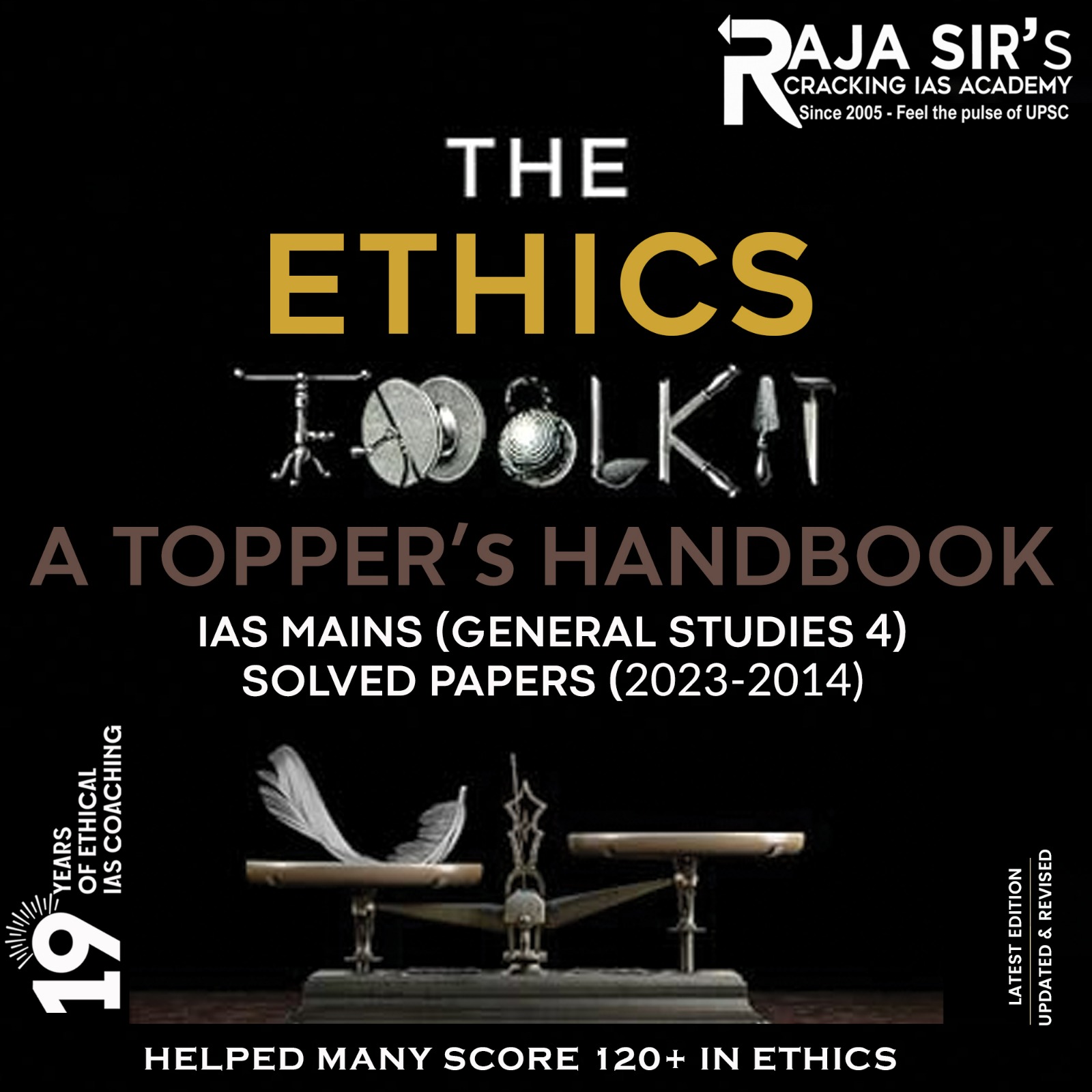- Home
- Prelims
- Mains
- Current Affairs
- Study Materials
- Test Series
Hit List Questions 39 -PPP 100 PRELIMS 2024 - 57
Questions & Explanations:
|
1. |
1. Western Ghats are relatively higher in their southern region. 2. Narmada River lies to the south of Satpura range. Which of the statements given above is/are correct? (a) 1 only (b) 2 only (c) Both 1 and 2 (d) Neither 1 nor 2
|
|
||||||||
|
2. |
Which one of the following correctly describes Tricholime in news? (a) a fungal biocontrol agent (b) neem-based urea (c) an alternative to NPK Fertliser (d) a bacterial spore mixed with lime to kill weeds
|
|
||||||||
|
3. |
Basaltic Lava rocks over Indian Deccan Plateau were formed in (a) Pleistocene period (b) Carboniferous period (c) Miocene period (d) Cretaceous period
|
|
||||||||
|
4. |
Consider the following statements wr.t. Western Equine Encephalitis virus infection: I. It is a mosquito-borne infection. II. Passerine birds are thought to be the reservoir. Which of the statements given above is/are correct? (a) Only I (b) Only II (c) Both I & II (d) Neither I nor II
|
|
||||||||
|
5. |
Two new mammalian species - Binturong or the bearcat and the small-clawed otter - have been recorded recently in the (a) Jim Corbett National Park (b) Kaziranga National Park (c) Pench National Park (d) Tadoba National Park
|
|
||||||||
|
6. |
The only river in India that passes the tropic of cancer twice is (a) Tapti (b) Mahi (c) Sabarmati (d) Luni
|
|
||||||||
|
7. |
Which of the following statements are true about India? 1. Tropic of Cancer passes through the middle of the country dividing into two latitudinal halves. 2. It occupies about 2.4% of the total area of the lithosphere. 3. It is located north of the equator between 10°4'' north and 47°6'' north latitude and 78°7'' east and 87°25'' east longitude. 4. It shares land borders with 8 nations. (a) 2 and 3 (b) 1 and 3 (c) 2 and 4 (d) 1 and 2
|
|
||||||||
|
8. |
Consider the following pairs:
Which of the above is/are incorrectly matched? (a) 1 only (b) 2 and 3 only (c) 1 and 3 only (d) 1, 2 and 3
|
|
||||||||
|
9. |
Which one of the following mountain ranges is spread over only one state in India? (a) Aravalli (b) Satpura (c) Ajanta (d) Sahyadri
|
|
||||||||
|
10. |
1. It is rich in Vitamin C. 2. It can withstand in waterlogged soils. Which of the statements given above is/are correct w.r.t. Kinnow fruit? (a) 1 only (b) 2 only (c) Both 1 and 2 (d) Neither 1 nor 2
|
|
||||||||
|
11. |
Extension of the International boundaries of India along with their neighboring countries in ascending order is (a) China, Bangladesh, Pakistan, Nepal (b) Nepal, Pakistan, China, Bangladesh (c) Nepal, Pakistan, Bangladesh, China (d) Pakistan, Nepal, China, Bangladesh
|
|
||||||||
|
12. |
Sikki Grass is widely known for its use in (a) handicraft (b) mosquito repellelent (c) antiviral medicine (d) fodder crop o
|
|
||||||||
|
13. |
Consider the following statements: 1. The longitude of Jabalpur’s location is between those of Indore and Bhopal. 2. The latitude of Aurangabad’s location is between those of Vadodara and Pune. 3. Bengaluru is situated more southward than Chennai. Which of these statements is/are correct? (a) 1 and 3 (b) Only 2 (c) 2 and 3 (d) 1, 2 and 3
|
|
||||||||
|
14. |
The average annual temperature of a meteorological station is 26°C, its average annual rainfall is 63 cm and the annual range temperature is 9°C. The station in question is: (a) Allahabad (b) Chennai (c) Cherrapunji (d) Kolkata
|
|
||||||||
|
15. |
When you travel in the Himalayas, you will see the following 1. Deep gorges 2. U-turn River courses 3. Parallel Mountain ranges 4. Steep gradients causing land sliding Which of the above can be said to be the pieces of evidence for the Himalayas being young fold mountains? (a) 1 and 2 (b) 1, 2 and 4 (c) 3 and 4 (d) 1, 2, 3 and 4
|
|
||||||||
|
16. |
Following are the characteristics of an area in India 1. Hot and humid climate 2. Annual rainfall 200 cm 3. Hill slopes up to an altitude of 1100 meters 4. Annual range of temperature 15°C to 30°C. Which one among the following crops is you most likely to find in the area described above? (a) Mustard (b) Cotton (c) Pepper (d) Tobacco
|
|
||||||||
|
17. |
Which one among the following is the most plausible explanation for the location of the Thar Desert in Western India?. (a) Prevalence of sand dunes (b) The evaporation of moisture by heat (c) The absence of mountains to the North of Rajasthan to cause orographic rainfall in it (d) The moisture carried by the South-West Monsoon is driven away by the dry upper air current
|
|
||||||||
|
18. |
‘Havisure’ in news refer to (a) Vaccine (b) Balanced Diet (c) A Himalayan plant (d) A Comet
|
|
||||||||
|
19. |
Correct statement(s) w.r.t. active galactic nucleus is/are 1. It emits radiation across the entire electromagnetic spectrum, from radio waves to gamma rays. 2. All quasars are active galactic nuclei. 3. Images from NASA''s Hubble Space Telescope shows interacting galaxies known as AM 1214-255 which contain active galactic nuclei. (a) 2 and 3 only (b) 3 only (c) 1 and 3 only (d) 1, 2 and 3
|
|
||||||||
|
20. |
Assertion: The Himalayan ranges show changes in vegetation from tropical to tundra. Reason: In the mountainous areas with an increase in altitude, there is a corresponding decrease in temperature, which leads to a change in vegetation types. (a) Both the Assertion and Reason are true and Reason is the correct explanation of Assertion. (b) Both the Assertion and Reason are true but Reason is not the correct explanation of Assertion (c) Assertion is correct but Reason is incorrect. (d) Both Assertion and Reason are incorrect.
|
|
||||||||
|
21. |
1. They are poor in Nitrogen and phosphorus. 2. Sand and silt make up more than 60% of the soil. 3. They have high water retaining capacity. Which of the statements given above is/are correct with reference to “Black Soils” of India? (a) Only 2 and 3 are correct (b) Only 1 and 3 are correct (c) Only 1 is correct (d) All are correct
|
|
||||||||
|
22. |
The biggest Island of Japan archipelago (a) Honshu (b) Hokkaido (c) Shikoku (d) Kyushu
|
|
||||||||
|
23. |
Which one of the following statements about the Himalayas is NOT correct? (a) The Great Boundary Fault separates the outer Himalayas from the lesser Himalayas. (b) They have geosynclinal rocks (c) Himalayan Frontal Fault is located between Shiwalik Himalayas and Northern Plain. (d) Indus and Sutlej rivers form antecedent drainage in Himalaya
|
|
||||||||
|
24. |
The latitude that passes through Arunachal Pradesh also passes through 1. Bihar 2. Madhya Pradesh 3. Haryana 4. Sikkim (a) 2 and 3 (b) 1 and 4 (c) 3 and 4 (d) 1 and 3
|
|
||||||||
|
25. |
ANEEL can guarantee India’s green energy transition. Recent headline news. What is ANEEL? (a) A Green Energy consortium (b) A Geothermal Energy plant (c) Nuclear Fuel (d) Bio fuel
|
|
EXPLANATIONS
|
1. |
The Western Ghats, also known as Sahyadri, is a mountain range that runs parallel to the Western Coast of India. The range stretches from the Tapti River in the north to the southern tip of India at Kanyakumari. Geographical Features: - The Western Ghats are considered to be one of the eight hottest hotspots of biological diversity in the world. - The range is spread across six states in India: Gujarat, Maharashtra, Goa, Karnataka, Tamil Nadu, and Kerala. - The Western Ghats is a UNESCO World Heritage Site and is home to many endangered species of flora and fauna. Altitude: - The Western Ghats are relatively higher in their southern region. The Anamalai Hills in Tamil Nadu and the Nilgiri Hills in Karnataka and Tamil Nadu are considered to be the highest parts of the Western Ghats. - The average height of the Western Ghats is between 900 and 1,200 meters. However, some peaks in the range rise over 2,000 meters above sea level. Climate: - The Western Ghats receive heavy rainfall, especially during the monsoon season. The range acts as a barrier to the moisture-laden winds coming from the Arabian Sea, and this results in heavy rainfall in the region. - The Western Ghats have a tropical monsoon climate, with temperatures ranging from 20°C to 30°C. The Narmada River originates from north-eastern end of Satpura in Amarkantak, and runs in the depression between the Satpura and Vindhya ranges, draining the northern slope of the Satpura range, running west towards the Arabian Sea.
|
A |
||||||||||||
|
2. |
A |
|||||||||||||
|
3. |
Deccan Traps are the great volcanic formation of the Indian subcontinent that consists of lava covering an area of more than 400,000 square kilometers, with a thickness estimated at about 3000 meters.
Key Points
Hence the Deccan Trap start to be built in the Cretaceous period.
|
D |
||||||||||||
|
4. |
C |
|||||||||||||
|
5. |
https://iasgoogle.com/current_affair/january-23-2024-current-affairs |
B |
||||||||||||
|
6. |
Mahi river is one of Five west-flowing rivers in India, along with Tapti River, Sabarmati River, Luni River and the Narmada River. It originates from Mehad Lake in Vindhyachal hills near Sardarpura of Amroru hill in the Dhar district of Madhya Pradesh. Two rivers crosses the Tropic of Cancer twice, they are, River CONGO or Zaire in Congo, Angola River MAHI in India crosses Tropic of Cancer in India twice. |
B |
||||||||||||
|
7. |
|
D |
||||||||||||
|
8. |
Srisailam:
Omkareshwar:
Pushkar:
|
B |
||||||||||||
|
9. |
Ajanta mountain range is short-range, which spreads within Maharashtra. – Aravali ranges cover Rajasthan, Haryana, and Delhi – Satpura ranges are found in Gujrat and Madhya Pradesh. – Sahyadris ranges start from Gujr at, Maharastra border and crossing Goa, Karnataka it reaches Kerala tip upto Cape Comrie. – Ajan ta is found in the Aurangabad district of Maharastra. |
C |
||||||||||||
|
10. |
|
A |
||||||||||||
|
11. |
Confusion Points
|
B |
||||||||||||
|
12. |
A |
|||||||||||||
|
13. |
The meridians of longitudes that lie to the east of the Prime Meridian are positive. While the meridians of longitude that lie to the west of the Prime Meridian are negative. The local time of any place where is with longitude and there is a difference of 1 hour in local time corresponding to every 15 meridians of longitude. Parallels of latitude imaginary lines on earth surface drawn parallel to the equator. The most important parallel of latitude is the equator that marks the distinction between the northern hemisphere and the southern hemisphere. The other important parallels of latitude are Tropic of Cancer, Tropic of Capricorn, the Arctic Circle, and the Antarctic circles. The latitude of Aurangabad location lies between the latitude of Vadodara location and the latitude of Pune location. Bangalore lies on a more southern latitude than Chennai. However, the longitude of Jabalpur’s location does not lie in between the longitude of Indore’s location and the longitude of Bhopal''s location.
|
C |
||||||||||||
|
14. |
India has a very wide range of physical features starting from the plains to the mountains. It also has plateaus and highlands, deltas, coastal areas, and island regions. This leads to a very diverse climate and weather pattern over the country. Often a place can easily be identified by the kind of climate it has. Let us see which of the given places has the climate described in the question- Allahabad has an average temperature of 25.7 °C and gets an annual rainfall of 38.6 in. It''s annual range of temperature is 18.1°C. Chennai has an average temperature of 26°C and gets an annual rainfall of 63 cm. It''s annual range of temperature is 9°C. Cherapunji has an average temperature of 17.3°C and gets an annual rainfall of 463.7 in. Its annual range of temperature is around 8°C. Kolkata has an average temperature of 26.2°C and gets an annual rainfall of 68.3 in. It''s annual range of temperature is 10.9°C. |
B |
||||||||||||
|
15. |
Evidences for Himalayas being young fold mountains: 1. Deep gorges: The presence of deep gorges in the Himalayas is a clear indication of their youthful nature. These gorges are formed by the erosion of the rivers that flow through the mountain range. Over time, water has carved out these deep channels, indicating that the Himalayas have not been around for a long period. 2. U-turn river courses: Another evidence for the youthfulness of the Himalayas is the presence of u-turn river courses. The steep gradients and unstable nature of the mountains cause the rivers to change their course frequently. As the mountains continue to rise and erode, the rivers are forced to change their paths, creating u-turns. This phenomenon is commonly observed in the Himalayas, indicating their recent formation. 3. Parallel mountain ranges: The Himalayas are not a single continuous mountain range but rather a series of parallel ranges. These ranges run roughly parallel to each other, separated by deep valleys and gorges. This pattern is indicative of the folding and uplifting of the Earth''s crust, which is a characteristic feature of young fold mountains. Over time, the mountains will continue to rise and erode, eventually merging into a single range. 4. Steep gradients causing land-sliding: The steep gradients of the Himalayas contribute to the occurrence of frequent landslides. The mountains are still in the process of adjusting to the tectonic forces acting upon them, causing instability and slope failures. This is a common phenomenon in young fold mountains, as they are still undergoing geological processes that shape the landscape. |
D |
||||||||||||
|
16. |
The above climate conditions are found in India in the Western coastal areas from Maharastra, Goa, Kerala, Coastal Karnataka including the Western Ghats, and hilly areas of northeast except some parts of Meghalaya and Arunachal Pradesh. Virginia tobacco is cultivated in Andhra Pradesh and can be grown in dry weather. So Pepper should be the correct option.
|
C |
||||||||||||
|
17. |
|
C |
||||||||||||
|
18. |
https://iasgoogle.com/current_affair/january-22-2024-current-affairs |
A |
||||||||||||
|
19. |
D |
|||||||||||||
|
20. |
The character and degree of vegetation are principally controlled by temperature alongside the dampness noticeable all around, precipitation, and soil. On the slants of the Himalayas and the slopes of the Peninsula over the stature of 915 meters, the fall in the temperature influences the sorts of vegetation and its development, and changes it from tropical to subtropical temperature. So in the mountainous territory with the expansion in height, there is a gradual decline in temperature, which prompts a change in vegetation types. Himalayan vegetation can be comprehensively grouped into four kinds—tropical, subtropical, mild, and mountainous —every one of which wins in a zone decided primarily by rise and precipitation. Mountain lands give a dissipated but assorted exhibit of territories wherein a huge scope of plants and creatures can be found. At higher elevations brutal natural conditions for the most part win, and treeless snow-capped vegetation, whereupon the current record is engaged, is upheld. Lower inclines regularly are covered by montane woodlands. At even lower levels mountain lands grade into different sorts of landform and vegetation—e.g., tropical or calm woodland, savanna, scrubland, desert, or tundra. |
A |
||||||||||||
|
21. |
Black soils are poor in Nitrogen, Humus and Phosphorus. They are rich in Iron, Magnesium and Aluminium along with lime. Clay makes upto 60-62% of soil. |
B |
||||||||||||
|
22. |
Japan archipelago:
|
A |
||||||||||||
|
23. |
|
A |
||||||||||||
|
24. |
The latitude that passes through Arunachal Pradesh also passes through Assam, Sikkim, Uttar Pradesh, Haryana and Rajasthan.
|
C |
||||||||||||
|
25. |
A |
|||||||||||||









 Latest News
Latest News





 General Studies
General Studies